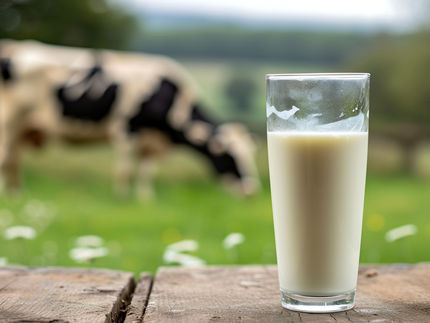New air testing detects campylobacter in chicken flocks more frequently
Advertisement
Campylobacter bacteria are the cause of the vast majority of registered cases of foodborne illness in Europe. In fact, the bacteria caused 246,571 registered cases of foodborne illness in 2018, which equates to 70% of all registered cases in Europe that year.

symbol image
RitaE/ Pixabay
An important tool to prevent campylobacter from making people sick is good data on where in the food chain the bacterium is present. A research project led by the National Food Institute, Technical University of Denmark, has developed a new test method that quadruples the likelihood of identifying campylobacter-positive chicken flocks.
It is important to identify campylobacter-positive flocks before they arrive at the slaughterhouse. This is because negative flocks are slaughtered first in order to avoid cross-contamination along the production line
Current wait time for test results is four days
Chicken producers normally use the ’sock method’ to test whether the bacterium is present.
The person in charge of testing puts gauze around their footwear and takes a walk through the chicken house. The gauze is placed in a growth medium for 48 hours during which time any bacteria that were trapped in the gauze can multiply many times.
The liquid is then put onto agar plates, which are left for another 48 hours to allow the bacteria to grow, thereby making it possible to determine if the flock is infected with campylobacter. As such, it currently takes more than four days before the producers know whether their flocks are positive.
Two hour response with new method
A new test method, developed by researchers at the National Food Institute in partnership with European colleagues, yields test results in just two hours. The method makes use of a type of mini-vacuum cleaner. It is fitted with a special filter, which collects the bacteria in the chicken house.
The filter is analysed with a PCR-test, which isolates DNA and determines whether campylobacter bacteria are present in the sample and in what quantities. The method was developed as part of the EU project, AIR-SAMPLE.
Comprehensive testing
The researchers have conducted comprehensive field testing in four EU member states in Northern, Southern, Central and Western Europe. The researchers used Norwegian chicken flocks as negative control, as chicken faeces from Norwegian flocks are normally campylobacter-negative.
The tests found no infections in Norway. The results also show that the likelihood of detecting campylobacter in a chicken flock has quadrupled with the new method. That is, up to four times more chicken flocks show signs of campylobacter being present when the new method is used compared to sock samples.
Campylobacter bacteria are the cause of the vast majority of registered cases of foodborne illness in Europe. In fact, the bacteria caused 246,571 registered cases of foodborne illness in 2018, which equates to 70% of all registered cases in Europe that year.
An important tool to prevent campylobacter from making people sick is good data on where in the food chain the bacterium is present. A research project led by the National Food Institute, Technical University of Denmark, has developed a new test method that quadruples the likelihood of identifying campylobacter-positive chicken flocks.
It is important to identify campylobacter-positive flocks before they arrive at the slaughterhouse. This is because negative flocks are slaughtered first in order to avoid cross-contamination along the production line
Current wait time for test results is four days
Chicken producers normally use the ’sock method’ to test whether the bacterium is present.
The person in charge of testing puts gauze around their footwear and takes a walk through the chicken house. The gauze is placed in a growth medium for 48 hours during which time any bacteria that were trapped in the gauze can multiply many times.
The liquid is then put onto agar plates, which are left for another 48 hours to allow the bacteria to grow, thereby making it possible to determine if the flock is infected with campylobacter. As such, it currently takes more than four days before the producers know whether their flocks are positive.
Two hour response with new method
A new test method, developed by researchers at the National Food Institute in partnership with European colleagues, yields test results in just two hours. The method makes use of a type of mini-vacuum cleaner. It is fitted with a special filter, which collects the bacteria in the chicken house.
The filter is analysed with a PCR-test, which isolates DNA and determines whether campylobacter bacteria are present in the sample and in what quantities. The method was developed as part of the EU project, AIR-SAMPLE.
Comprehensive testing
The researchers have conducted comprehensive field testing in four EU member states in Northern, Southern, Central and Western Europe. The researchers used Norwegian chicken flocks as negative control, as chicken faeces from Norwegian flocks are normally campylobacter-negative.
The tests found no infections in Norway. The results also show that the likelihood of detecting campylobacter in a chicken flock has quadrupled with the new method. That is, up to four times more chicken flocks show signs of campylobacter being present when the new method is used compared to sock samples.
Campylobacter bacteria are the cause of the vast majority of registered cases of foodborne illness in Europe. In fact, the bacteria caused 246,571 registered cases of foodborne illness in 2018, which equates to 70% of all registered cases in Europe that year.
An important tool to prevent campylobacter from making people sick is good data on where in the food chain the bacterium is present. A research project led by the National Food Institute, Technical University of Denmark, has developed a new test method that quadruples the likelihood of identifying campylobacter-positive chicken flocks.
It is important to identify campylobacter-positive flocks before they arrive at the slaughterhouse. This is because negative flocks are slaughtered first in order to avoid cross-contamination along the production line
Current wait time for test results is four days
Chicken producers normally use the ’sock method’ to test whether the bacterium is present.
The person in charge of testing puts gauze around their footwear and takes a walk through the chicken house. The gauze is placed in a growth medium for 48 hours during which time any bacteria that were trapped in the gauze can multiply many times.
The liquid is then put onto agar plates, which are left for another 48 hours to allow the bacteria to grow, thereby making it possible to determine if the flock is infected with campylobacter. As such, it currently takes more than four days before the producers know whether their flocks are positive.
Two hour response with new method
A new test method, developed by researchers at the National Food Institute in partnership with European colleagues, yields test results in just two hours. The method makes use of a type of mini-vacuum cleaner. It is fitted with a special filter, which collects the bacteria in the chicken house.
The filter is analysed with a PCR-test, which isolates DNA and determines whether campylobacter bacteria are present in the sample and in what quantities. The method was developed as part of the EU project, AIR-SAMPLE.
Comprehensive testing
The researchers have conducted comprehensive field testing in four EU member states in Northern, Southern, Central and Western Europe. The researchers used Norwegian chicken flocks as negative control, as chicken faeces from Norwegian flocks are normally campylobacter-negative.
The tests found no infections in Norway. The results also show that the likelihood of detecting campylobacter in a chicken flock has quadrupled with the new method. That is, up to four times more chicken flocks show signs of campylobacter being present when the new method is used compared to sock samples.
Other news from the department science
Most read news
More news from our other portals
See the theme worlds for related content
Topic world Food safety
Food safety is at the heart of the food and beverage industry. It ensures that the food we eat every day is not only nutritious, but also free of harmful contaminants. From field to plate, the industry monitors and regulates every step of the process with strict quality controls, advanced testing methods and continuous research.

Topic world Food safety
Food safety is at the heart of the food and beverage industry. It ensures that the food we eat every day is not only nutritious, but also free of harmful contaminants. From field to plate, the industry monitors and regulates every step of the process with strict quality controls, advanced testing methods and continuous research.























































